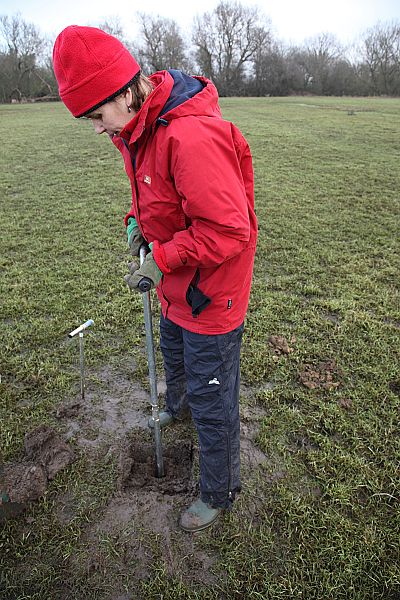
MG4 meadows are a naturally productive, species-rich plant community. Changes in nutrient inputs, either through a reduction or an increase, can be damaging.
When nutrient levels are too low, hay yields may drop to less than 3 tonnes per hectare and this can indicate that the plant community is suffering from inadequate nutrient levels. Low hay yields are damaging to the economy of the farm that depends on the hay crop, and low nutrient levels may result in a reduction of characteristic plant species.
Download an article on when to cut a meadow.
Typically, nutrients are replenished on these meadows through winter floods depositing river silts that carry phosphorus and nitrogen. The exclusion of floodwaters and loss of nutrient deposition from a site can potentially be very damaging. It could be that well rotted farm manure applied in appropriately low amounts and at the right time of year may compensate for losses, but this has not been experimentally tested.
Conversely, excessive nutrient deposition can also change the plant composition. Indications of high nutrient levels include high hay yields (more than 5 tonnes per hectare), increasing cover of perennial ryegrass (more than 20%) or a total grass cover of more than 60%. Chemical soil tests can also be used to determine the phosphorus levels on a site. If these are too high, the overall number of plant species may decline rapidly.
If indications of high nutrient inputs persist, then there may be a wider catchment problem with elevated phosphorus inputs from farm management from upstream, Sewage Treatment Works inputs and other sources. Altered land management may be one possible solution, but improving drainage on site could help floodwaters leave the site more quickly, thus preventing excessive silt deposition on the meadows.
See our plant grid to find out more about different plant communities and their water and nutrient requirements.
For more information on Nutrients please see B.D. Wheeler, D.J.G. Gowing, S.C. Shaw,, J.O. Mountford, and R.P. Money, 2004. Ecohydrological Guidelines for Lowland Wetland Plant Communities (Eds. A.W. Brooks, P.V. Jose, and M.I. Whiteman,). Environment Agency (Anglian Region).